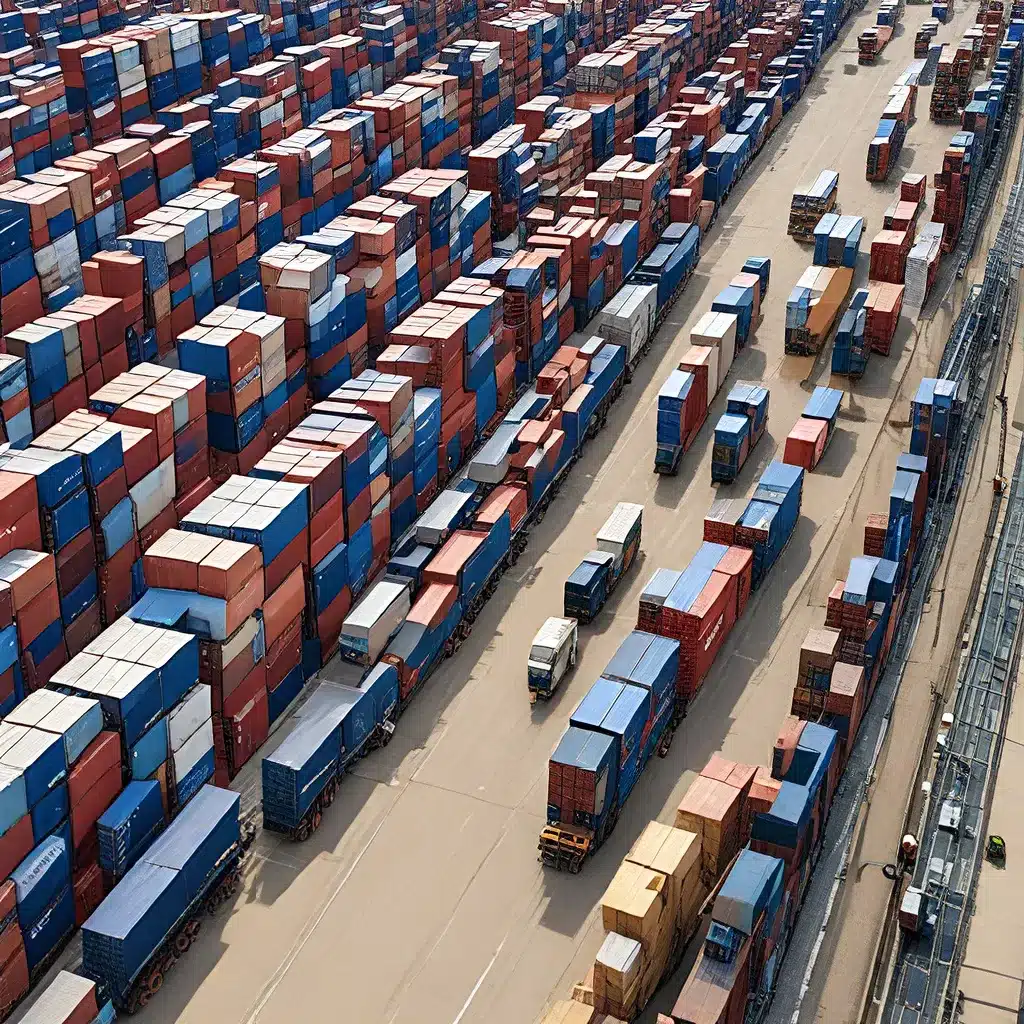
In the rapidly evolving world of supply chain management, the integration of sensor networks and Internet of Things (IoT) technologies has emerged as a game-changing force. By harnessing the power of connected devices, organizations can now unlock unprecedented levels of visibility, traceability, and efficiency within their supply chain operations.
Transforming Supply Chain Processes with IoT Sensors
The traditional supply chain industry has often been characterized by its reliance on manual processes and paper-based systems, limiting its ability to respond to the dynamic demands of the modern business landscape. However, the advent of IoT sensors has ushered in a new era of digitization and automation, revolutionizing the way supply chain operations are managed.
IoT sensors integrated throughout the supply chain enable the real-time collection and transmission of critical data, such as the location, condition, and status of transported goods and supply chain assets. This continuous flow of information empowers supply chain stakeholders to make informed, data-driven decisions, ultimately leading to a more efficient and transparent supply chain.
By leveraging IoT data, organizations can optimize decision-making, enhance freight transportation control, and improve overall supply chain management. This enhanced visibility and traceability can also contribute to improved product quality, increased customer loyalty, and the ability to address challenges related to security, compliance, and data sharing.
Enhancing Supply Chain Visibility and Traceability
One of the primary benefits of integrating IoT sensors into the supply chain is the enhanced visibility it provides. Through the use of interconnected devices, companies can now track the movement and condition of goods throughout the entire supply chain, from the point of origin to the final destination.
This increased visibility enables organizations to reduce waiting times, respond to deviations dynamically, and ensure the integrity of their products. By having real-time access to data on shipment location, temperature, humidity, and other critical factors, supply chain managers can make proactive decisions to mitigate risks and optimize the flow of goods.
Moreover, the integration of blockchain technology with IoT sensor data can further enhance supply chain traceability. Blockchain provides a decentralized and immutable ledger that ensures the security and integrity of data across the entire supply chain network. This allows for the secure and transparent recording of transactions and product information, fostering trust among multiple stakeholders and enabling a more effective and efficient supply chain.
Optimizing Supply Chain Efficiency and Decision-Making
The wealth of data generated by IoT sensors in the supply chain can also be leveraged to drive operational efficiency and improve decision-making. By analyzing the real-time information collected by these connected devices, organizations can identify bottlenecks, optimize logistics, and streamline inventory management.
For example, IoT sensors can provide insights into freight transportation by monitoring factors such as vehicle location, fuel consumption, and driver behavior. This data can then be used to optimize routing, reduce idle time, and improve fleet management, ultimately leading to cost savings and enhanced sustainability.
Furthermore, the integration of IoT data with advanced analytics and predictive modeling can enable supply chain managers to anticipate and respond to changing demands, forecast inventory needs, and proactively address potential disruptions. This data-driven approach allows organizations to make more informed decisions, minimize waste, and enhance overall supply chain performance.
Addressing Security and Energy Challenges in Sensor Networks
As the deployment of IoT sensors becomes more prevalent in supply chain operations, it is crucial to address the associated security and energy management challenges.
Security is a paramount concern in IoT-enabled supply chains, as the vast network of interconnected devices can be vulnerable to cyberattacks, data breaches, and unauthorized access. To mitigate these risks, organizations must implement robust security protocols, encryption mechanisms, and access control measures to ensure the confidentiality, integrity, and availability of their supply chain data.
Additionally, the energy efficiency of sensor networks is a critical consideration, as these devices are often deployed in remote or hard-to-reach areas, making battery life a significant constraint. Advancements in energy-harvesting technologies, low-power communication protocols, and energy-efficient sensor designs are crucial to ensuring the long-term sustainability and reliability of sensor-driven supply chain systems.
The Future of Sensor-Driven Supply Chain Optimization
As the world continues to embrace the transformative power of IoT and sensor networks, the future of supply chain optimization holds immense promise. By leveraging these technologies, organizations can enhance their competitive edge, improve customer satisfaction, and contribute to a more sustainable and resilient global supply chain ecosystem.
The seamless integration of sensor data, advanced analytics, and intelligent automation will pave the way for predictive maintenance, autonomous logistics, and self-correcting supply chain processes. Furthermore, the continued advancements in battery life, energy harvesting, and secure communication protocols will ensure the long-term viability and scalability of sensor-driven supply chain solutions.
Sensor-Networks.org is at the forefront of this technological revolution, providing a platform for industry professionals, researchers, and enthusiasts to collaborate, share insights, and explore the transformative potential of sensor networks in supply chain management and beyond.